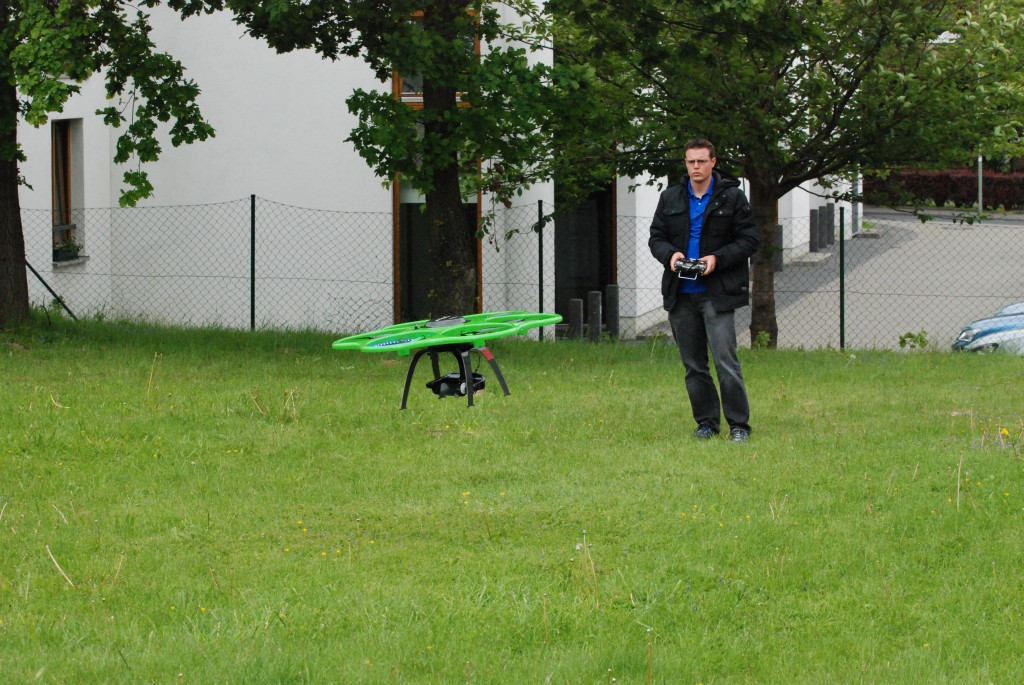On Friday Christian Campo and myself visited a startup company in Kassel, Germany.
They design, program and manufacture what they call intelligent autonomous vehicles, the next generation copters. The idea is that the hexa-copters can be used for unmanned surveillance missions that needed way more expensive methods in the past: One example that Joerg Lamprecht, the CEO of the company describes involves these vehicles inspecting building status or taking high-precision arial photos.
As with all the other manned or unmanned vehicles I’ve been dealing with lately, these machines rely heavily on the software that comes with them. While there’s a whole bunch of other issues like robustness, weight and construction, the big challenge is to provide software that doesn’t need an experienced pilot to fly around a building and take head-photos.
Logically, the company has a couple of cool software developers to provide a platform system for the copters that integrates all access to navigation, flight control, camera adjustment and such. On the other hand they are very interested in developing apps that can be used on top of the platform. These apps could be maneuvers such as loopings or turns, or it could be even more complicated tasks like ‘fly around this building in a spiral and measure it’.
Time was flying by, and just before we had to leave Joerg took us to their manufacturing hall to see a bunch of young kids building the copter platforms. After the visit I was wondering what the banks and insurance companies have to do in the future to keep their developers from running away and doing cool stuff like Aibotix is doing.
Both Christian and I look forward to the arrival of the IoT!



